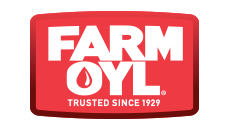Grease Manufacturing
The basic raw materials used in the manufacture of grease are fats, metallic hydroxides, oils, and additives. Fats are usually defined as being a solid at room temperature whereas an oil would be a liquid at that temperature. Fatty materials can include animal fats, fish oils, and oils from various plants such as castor beans, rapeseed, etc. Metallic hydroxides such as lithium, calcium, aluminum, sodium, and barium are common materials used in a reaction to form a soap. The oil used may be a mineral (petroleum) or a synthetic oil, while the additives are designed to improve the performance or appearance of the grease.
A chemical reaction, called saponification, of the fatty material with the metallic hydroxide is carried out in a heated kettle to form a metallic soap. The metallic soap supplies the fiber structure that will hold the lubricating fluid (oil) as if in a sponge and gives the body or consistency to the grease. A greater amount of soap in a grease usually provides for a harder consistency. The lubricating oil and additives are mixed into the soap to form the finished grease.
The lubricating oil used in a grease is a very important part of the product since the grease is often composed of 85-90% oil. Type, amount and viscosity of the oil will determine the characteristics of grease and performance in various applications. The proper amount of lubricating oil is slowly worked into the hot metallic soap solution to give the resulting grease the proper consistency. By varying the ingredients and manufacturing procedures, many different types of grease can be made. Grease is usually classified on the basis of the metallic soap that was used, such as a lithium or aluminum grease.
Different types of additives can be added to the grease to improve certain physical and performance characteristics. Oxidation inhibitors, anti-wear additives, tackiness agents and coloring materials are frequently used additives.
Grease Consistency
The consistency of a grease is its hardness, or resistance to movement. A grease with a higher concentration of soap will generally be harder. The National Lubricating Grease Institute (NLGI) has published the following numerical scale for classifying the consistency of greases.
NLGI Grades of Grease

The ASTM Worked Penetration is measured at 77°F and is expressed as tenths of a millimeter of standard cone penetration when released onto the surface of the grease after 60 double strokes in a standard grease worker.
The greases commonly recommended for general lubrication, and the greases most familiar to the public as automotive chassis greases are NLGI #2 grade, or on occasion, an NLGI #1 grade.
Grease Compatibility

 Menu
Close
Menu
Close